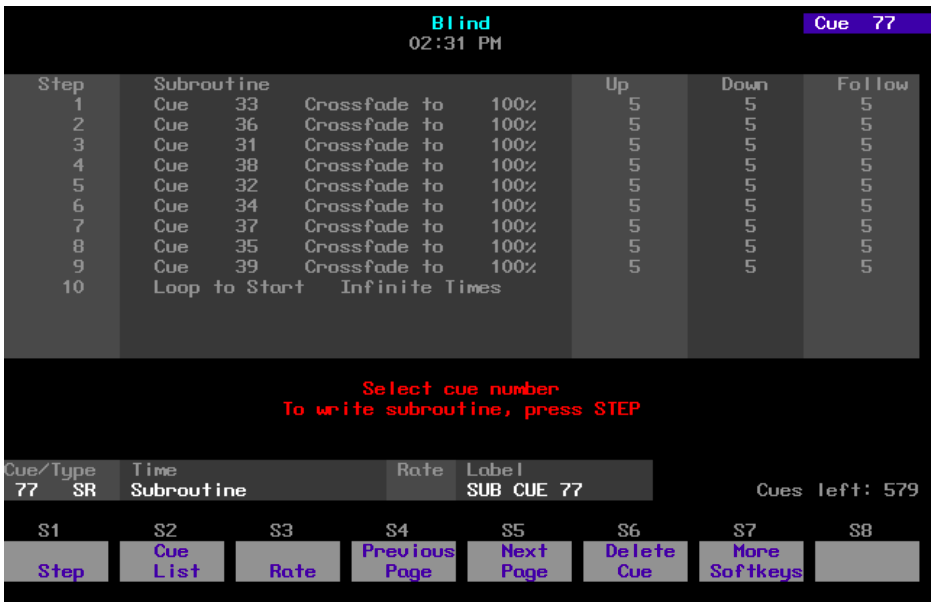Steps in Subroutines in Express
All subroutine steps are either cue steps or style steps. A cue step contains an existing recorded cue, which may be an effect cue. The subroutine lets you change levels and fade rates for the cue step without changing the original cues.
A style step contains an instruction that controls the subroutine’s playback pattern. This allows you to run loops, run bounces, pause the subroutine until you press go, or end the subroutine and jump to any other cue. The following display shows a subroutine that runs a series of cues in a loop.

There are three types of cue steps.
| Crossfade | A crossfade step is a cue in which all increasing levels fade in the upfade time and all decreasing levels fade in the downfade time. |
| Allfade | An allfade step is a cue in which all channels in both faders fade to a level that you choose and assign to the step. |
| Blocking | A blocking step is a cue that first stops all background cues from running before it runs in a physical fader. |
The following playback styles are available for subroutines. A style is assigned to a step. When the subroutine runs, the steps play back in numeric order, until the subroutine reaches a style step. The style step then determines whether the subroutine will loop, bounce, hold, or end and run a different cue.
- Loop - The subroutine runs through steps until it reaches a Loop step. It then returns to the first step, and repeats the sequence for the number of times you specify. When you create the Loop step, enter the number of times you want the loop to return to the top of the step list. If you enter 5, the sequence will play six times. Enter 0 to create a continuous loop.
- Bounce - The subroutine runs through steps until it reaches a Bounce step. It then runs back through the steps in reverse order, and repeats the sequence for the number of times you specify. When you create the Bounce step, enter the number of times you want the subroutine to bounce. One bounce equals running through the sequence forward once and reverse once. Enter 0 for a continuous bounce.
- Jump-to-cue - The subroutine runs through steps until it reaches a Jump-to-cue step. It then automatically starts another cue which is not included in the subroutine. You can jump to any type of cue: regular, subroutine or effect. When you create the Jump-to-cue step, enter the number of the cue to which to jump.
- Hold-for-Go - The subroutine runs through steps until it reaches a Hold-for-Go step. It then pauses until you press [Go].
